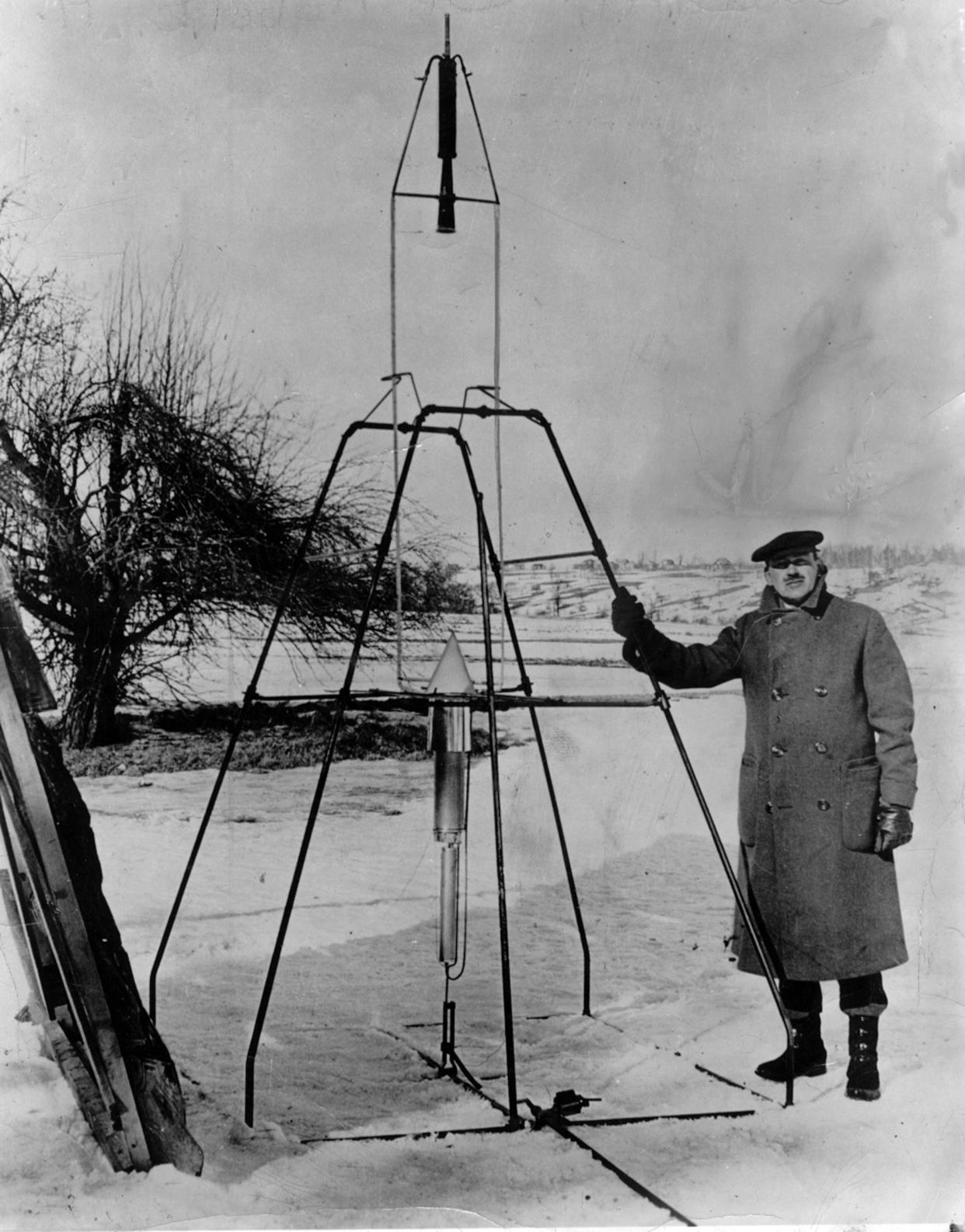Worcester, Auburn begin plans for Robert Goddard rocket launch centennial celebration

- Oops!Something went wrong.Please try again later.
WORCESTER ― The countdown is on for the centennial to celebrate 100 years since Worcester physicist, engineer, teacher, inventor and the "Father of Modern Rocketry" Robert H. Goddard's first successful liquid-fueled rocket launch in Auburn March 16, 1926.
It will be a celebration that could have Worcester and Auburn on a world stage two years from now.
At a well-attended press conference at the Robert and Esther Goddard House (Goddard's birthplace) on Tallawanda Drive Saturday morning, Worcester and Auburn officials and Charles Slatkin, owner of the house and founder of The Wonder Mission, announced the beginnings of plans to feature a wide range of possible events and initiatives on and around March 16, 2026.
"We are proud to be the birthplace of Robert Goddard," said Worcester Mayor Joseph M. Petty. He said the Town of Auburn and the City of Worcester are forming a steering committee to brainstorm and strategize on how best to create a centennial that benefits the greater Worcester and Auburn communities in a purposeful and inspiring way. People "from all walks of life," Petty said, will make up the steering committee.
Peter Dunn, Worcester's chief development officer, said the steering committee will shape what the celebration will look like.
The Wonder Mission, which describes itself as a nonprofit organization "dedicated to creating events and experiences that inspire the next generation of scientists, engineers, educators, innovators, and 'visioneers,'" is developing a "First Launch Centennial" initiative in cooperation with Worcester and Auburn, Slatkin said.
"I think Worcester has a great opportunity to get on the world stage," Slatkin said.
Slatkin said among "early ideas" and considerations for the centennial are city and national proclamations; who to bring in nationally for the celebration; establishing a permanent Goddard visitors site; a special postage stamp; Goddard statues and introduction of curricular into the school system.
Goddard (1882-1945) launched the rocket from what was then his Aunt Effie’s cabbage farm (now Pakachoag Golf Course) in Auburn. From that start, Goddard's work and achievements would eventually lead to the dawn of the Space Age. The Goddard Space Flight Center, a NASA facility in Greenbelt, Maryland, was established in 1959, 14 years after his death.
U.S. Rep. James P. McGovern said, "We know that together people in Worcester can do hard things." He joked that rocket science counts as "hard things."
As important as it is to celebrate Goddard, the centennial also offers the opportunity to increase student engagement with space education and boost participation in STEM (science, technology, engineering and mathematics) education, speakers said.
"We're counting on young people in this country today to be the leaders of the future," said McGovern.
Slatkin said he envisions the centennial also celebrating the contributions of "our modern-day Goddards" — scientists, engineers, explorers, educators and visionaries who, often "unsung," work to expand human knowledge.
Others who spoke at the press conference included Daniel S. Carpenter, vice chair of the Auburn Board of Selectmen, and state Rep. David H.A. LeBoeuf,
The press conference was symbolically held Saturday, 98 years from the first rocket launch. Also, the location of Goddard's home at 1 Tallawanda Drive in the Webster Square area is significant for centennial events including an envision for the house as a centennial office headquarters to share and distribute resources and ideas locally and nationally.
The house, which was Goddard's family home for many years, was bought by Charles and Marcia Slatkin in 2021 and renovated as a landmark property and educational resource.
Goddard graduated from South High School in 1904 and from Worcester Polytechnic Institute in 1908, and earned a doctorate in physics from Clark University in 1911. He taught physics at Clark for many years. Edwin Aldrin Sr., father of Apollo II astronaut “Buzz” Aldrin, was one of Goddard’s students.
According to space.com, March 16, 1926, the rocket burned for about 20 seconds before taking off, melting part of the nozzle. In 2.5 seconds, it traveled to a height of 41 feet, leveled off and hit the ground 184 feet away.
In 1929 Goddard launched another rocket in Auburn, which prompted the Massachusetts fire marshal to ban the activity. The Worcester Historical Museum notes that Goddard received little support for his pioneering efforts. In reports and editorials, newspapers poked fun at the “Moon Man.”
But among his believers was aviator Charles Lindbergh, who convinced the Guggenheim Foundation to support Goddard's work. With assistance of the foundation, Goddard moved to Roswell, New Mexico, where he continued his experiments. That first launch in 1926 is now considered as significant as the first flight of the Wright Brothers at Kitty Hawk.
However, Slatkin noted that based on interviews he has done with young people, 30% to 40% of people in Worcester County "don't know who Robert Goddard is...We really haven't done enough to own the Goddard legacy. The centennial is a really great opportunity to own that message."
The planning is very much at the beginning stage, Slatkin said in an interview.
"A year from now we should do another countdown and see where we are."
This article originally appeared on Telegram & Gazette: Robert Goddard rocket launch centennial celebration planning begins

